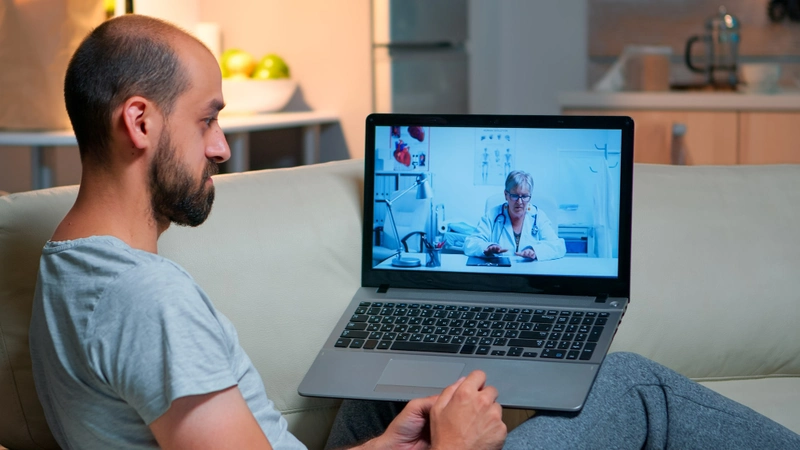- Published on: Feb 04, 2025
- 2 minute read
- By: SecondMedic Expert
World Cancer Day 2025: The Role Of Comprehensive Diagnostic Centers In Personalized Cancer Care
World Cancer Day, observed annually on February 4th, serves as a global initiative to raise awareness and promote action against cancer. The theme for 2025, "United by Unique," emphasizes the importance of personalized, patient-centered care in the fight against cancer. Comprehensive diagnostic centres play a pivotal role in this approach, offering tailored services that address the unique needs of each patient.
The Importance of Personalized Cancer Care Diagnostic Centers
Personalized cancer care diagnostic centres are at the forefront of modern oncology, providing individualized assessments that guide treatment decisions. These centres utilize advanced technologies to analyze the specific characteristics of a patient's cancer, including genetic mutations and molecular profiles. This detailed understanding enables healthcare providers to develop targeted therapies that improve outcomes and minimize side effects.
Comprehensive Cancer Diagnostics Services
Comprehensive cancer diagnostics services encompass a range of tests and evaluations designed to detect cancer at its earliest stages and monitor its progression. These services include imaging studies, laboratory tests, genetic screenings, and biopsies. By integrating these diagnostic tools, centres can offer a holistic view of a patient's health, facilitating timely and accurate diagnoses. Early detection through comprehensive diagnostics is crucial, as it significantly increases the chances of successful treatment and survival.
Advancements in Personalized Cancer Diagnostics
The field of personalized cancer diagnostics has seen remarkable advancements in recent years. Innovations such as liquid biopsies, which detect cancer cells or DNA fragments in blood samples, and AI-powered imaging analysis have revolutionized the way cancers are detected and characterized. These technologies allow for less invasive procedures, quicker results, and more precise treatment planning. For instance, AI-powered platforms have been developed to assist in the diagnosis and evaluation of lung cancer, providing fully automated and in-depth analysis of tissues.
The Role of Diagnostic Centers in Personalized Cancer Therapy
Diagnostic centres are integral to personalized cancer therapy, as they provide the essential information needed to tailor treatments to individual patients. By conducting thorough assessments, these centres identify specific biomarkers and genetic alterations that can be targeted with precision therapies. This approach not only enhances the effectiveness of treatments but also reduces the likelihood of adverse effects, leading to improved patient outcomes. Moreover, diagnostic centres often offer comprehensive cancer screening services, enabling the early detection of malignancies and the implementation of timely interventions.
Benefits of Personalized Diagnostics in Cancer Treatment
Personalized diagnostics offer numerous benefits in cancer treatment. By understanding the unique genetic makeup of a patient's tumour, clinicians can select therapies that are more likely to be effective, thereby increasing the chances of remission. Additionally, personalized diagnostics can identify patients who are unlikely to respond to certain treatments, sparing them from unnecessary side effects and allowing for alternative strategies to be pursued. This individualized approach ensures that each patient receives the most appropriate care based on their specific condition.
Advanced Cancer Diagnostic Technologies at Second Medic
At Second Medic, we are committed to providing state-of-the-art diagnostic services that support personalized cancer care. Our facility is equipped with advanced technologies, including high-resolution imaging systems, molecular testing laboratories, and AI-driven diagnostic tools. These resources enable us to perform comprehensive evaluations and deliver precise diagnoses, forming the foundation for effective, individualized treatment plans. Our team of experienced professionals works collaboratively to ensure that each patient receives care tailored to their unique needs.
World Cancer Day 2025 Events
In alignment with the "United by Unique" theme of World Cancer Day 2025, Second Medic is hosting a series of events aimed at promoting personalized cancer care. These events include educational seminars, free screening programs, and patient support workshops. By participating in these initiatives, individuals can gain valuable insights into the importance of personalized diagnostics and learn about the services available to them. We encourage community members to join us in these efforts to raise awareness and support those affected by cancer.
Conclusion
As we observe World Cancer Day 2025, it is essential to recognize the critical role that comprehensive diagnostic centres play in personalized cancer care. Through advanced diagnostics and individualized treatment planning, these centres empower patients and healthcare providers to combat cancer more effectively. At Second Medic, we are dedicated to advancing personalized cancer diagnostics and providing services that meet the unique needs of each patient. Together, united by our commitment to individualized care, we can make significant strides in the fight against cancer.
Read FAQs
A. Comprehensive diagnostic centres provide a range of services, including advanced imaging, genetic testing, and molecular profiling, to tailor cancer treatments to individual patient needs.
A. Innovations such as liquid biopsies and AI-powered imaging analyses enable earlier detection and more precise characterization of cancers, leading to more effective and personalized treatment plans.
A. Early detection allows for interventions at a stage when cancer is most treatable, increasing the likelihood of successful outcomes and enabling the use of less aggressive therapies tailored to the patient's specific condition.










